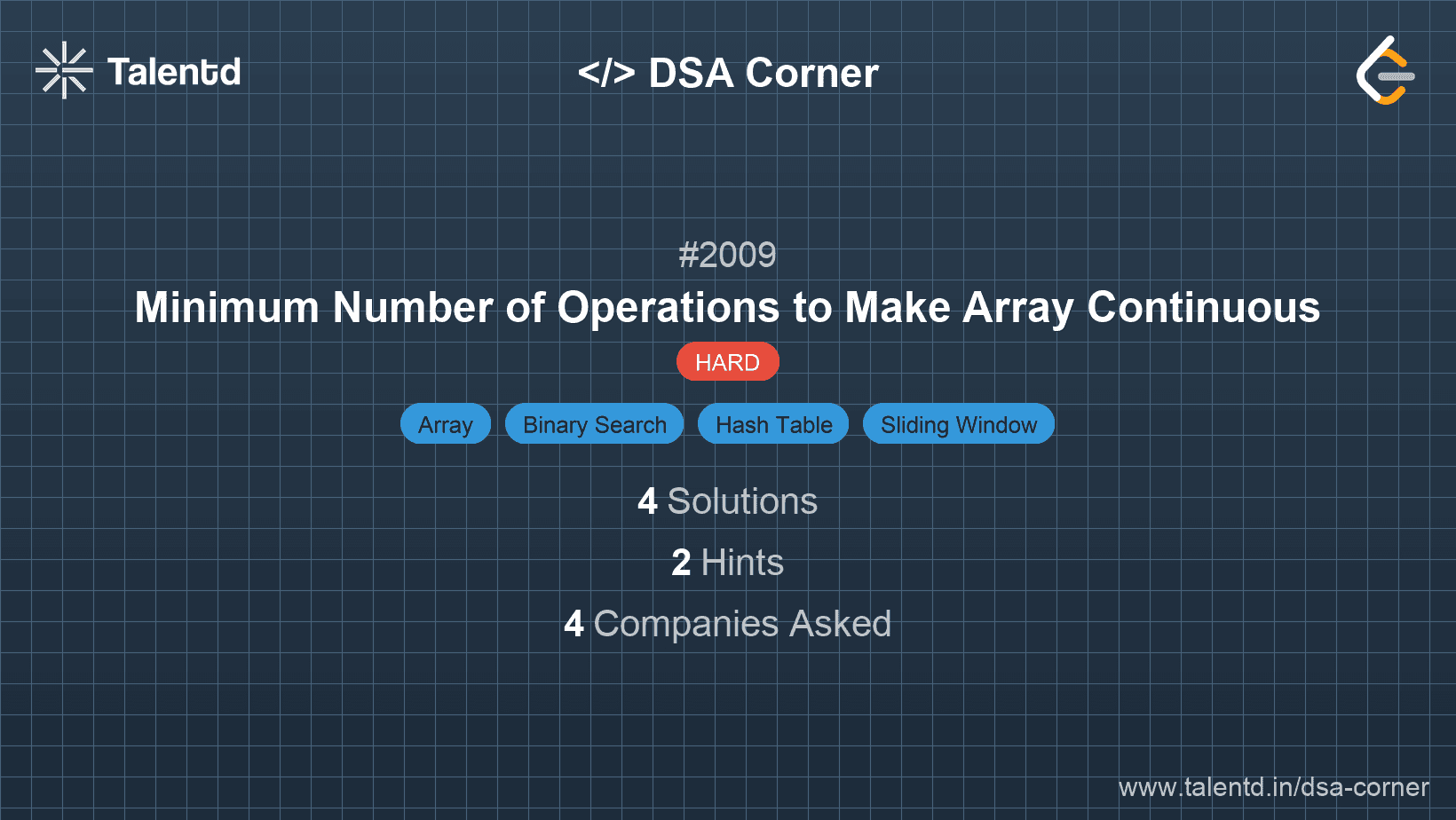
Sponsored
Sponsored
This approach involves sorting the array and then using a sliding window technique to identify the minimal range that can lead to a continuous array by transformation.
Steps:
nums.length - 1.Time Complexity: O(N log N) due to sorting. Space Complexity: O(N) for the extra space used by the set and sorted list.
1def min_operations(nums):
2 nums = sorted(set(nums))
3 n = len(nums)
4 max_nums_len = len(nums)
5 i, j, max_valid_count = 0, 0, 0
6 while j < max_nums_len:
7 while j < max_nums_len and nums[j] - nums[i] < n:
8 j += 1
9 max_valid_count = max(max_valid_count, j - i)
10 i += 1
11 return n - max_valid_count
12
13# Example usage:
14print(min_operations([4, 2, 5, 3])) # Output: 0
15print(min_operations([1, 2, 3, 5, 6])) # Output: 1
16print(min_operations([1, 10, 100, 1000])) # Output: 3This Python solution first creates a sorted and deduplicated list of nums. It uses two pointers to traverse the sorted list, maintaining the largest subarray where the elements fulfill the necessary range condition. The difference between the original size and this subarray's size gives the answer.
This approach optimally uses binary search for potentially faster window limits:
Time Complexity: O(N log N) due to sorting. Space Complexity: O(N) for data storage.
1import java.util.*;
2
3
This Java solution first constructs a deduplicated sorted list and utilizes binary search to determine the longest valid subarray within constraints, minimizing transformation operations needed.